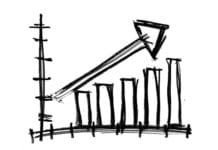1. The Day Trader
A day trader will, for a lack of a better definition, trade for the day. These are market participants that will usually avoid holding anything after the session close and will trade in a high-volume fashion. This short-term trader will generally aim for a quick turnover rate on one or more trades, anywhere from 10- to 100-times the normal transaction size. This is in order to capture more profit from a rather small swing. As a result, traders who work in proprietary shops in this fashion will tend to use shorter time-frame charts, using one-, five-, or 15-minute periods. Day traders tend to rely more on technical trading patterns and volatile pairs to make their profits.
There are two kinds of day traders: those who trade individually and those who work with a financial institution. A day trader who works individually often manages other people’s money or uses own money, but the limited scope of resources often prevents him from competing with the day trader who works with a company. Day traders usually hold their securities for a single day and their trading style is very different from real-time investors. They close their positions at the end of each day. Due to the short-term nature of day trading, there is less risk involved in it as there’s no risk of something happening overnight to cause a big loss.
2. Swing Trader
Taking advantage of a longer time frame, the swing trader will sometimes hold positions for a couple of hours – maybe even days or longer – in order to call a turn in the market. Unlike a day trader, the swing trader is looking to profit from an entry into the market, hoping the change in direction will help his or her position. In this respect, timing is more important in a swing trader’s strategy compared to a day trader. These types of traders can’t monitor their charts throughout the day so they dedicate a couple hours analysing the market every night to make sound trading decisions.
3. Position traders
Position traders who holds an investment for an extended period of time which last for several weeks, months, or even years. These traders know that fundamental themes will be the predominant factor when analysing the markets and therefore make their trading decisions based on them. they are less concerned with short-term fluctuations and the news of the day unless it impacts the long term view of their position. Position traders do not trade actively, with most placing less than 10 trades a year.
4. Scalping
Scalping is one of the quickest strategies employed by active traders. It includes exploiting various price gaps caused by bid-Ask price and order flows. The strategy generally works by making the spread or buying at the bid price and selling at the ask price to receive the difference between the two price points. Scalpers hold onto for a few seconds to a few minutes at the most. Their main objective is to grab very small amounts of pips as many times as they can throughout the busiest times of the day. They try to take advantage of small moves that occur frequently and move smaller volumes more often. Since the level of profits per trade is small, scalpers look for more liquid markets to increase the frequency of their trades.
Also read: What is Forex and Forex trading?



